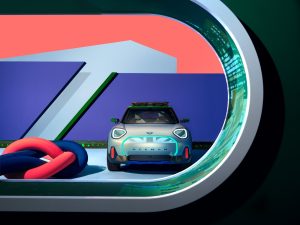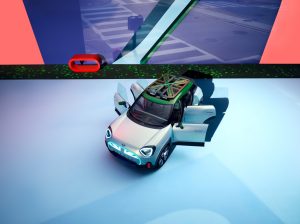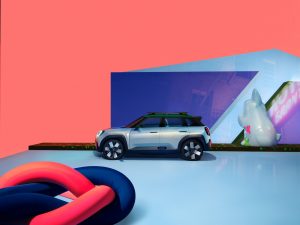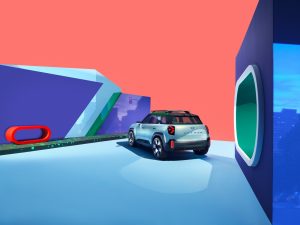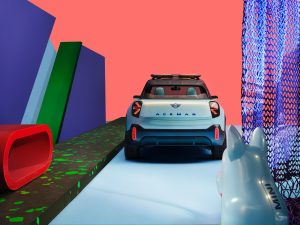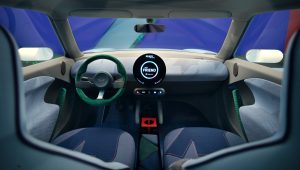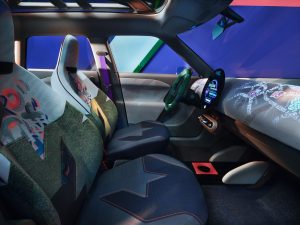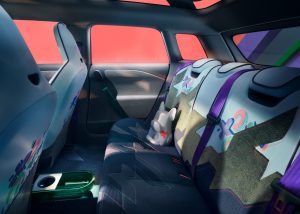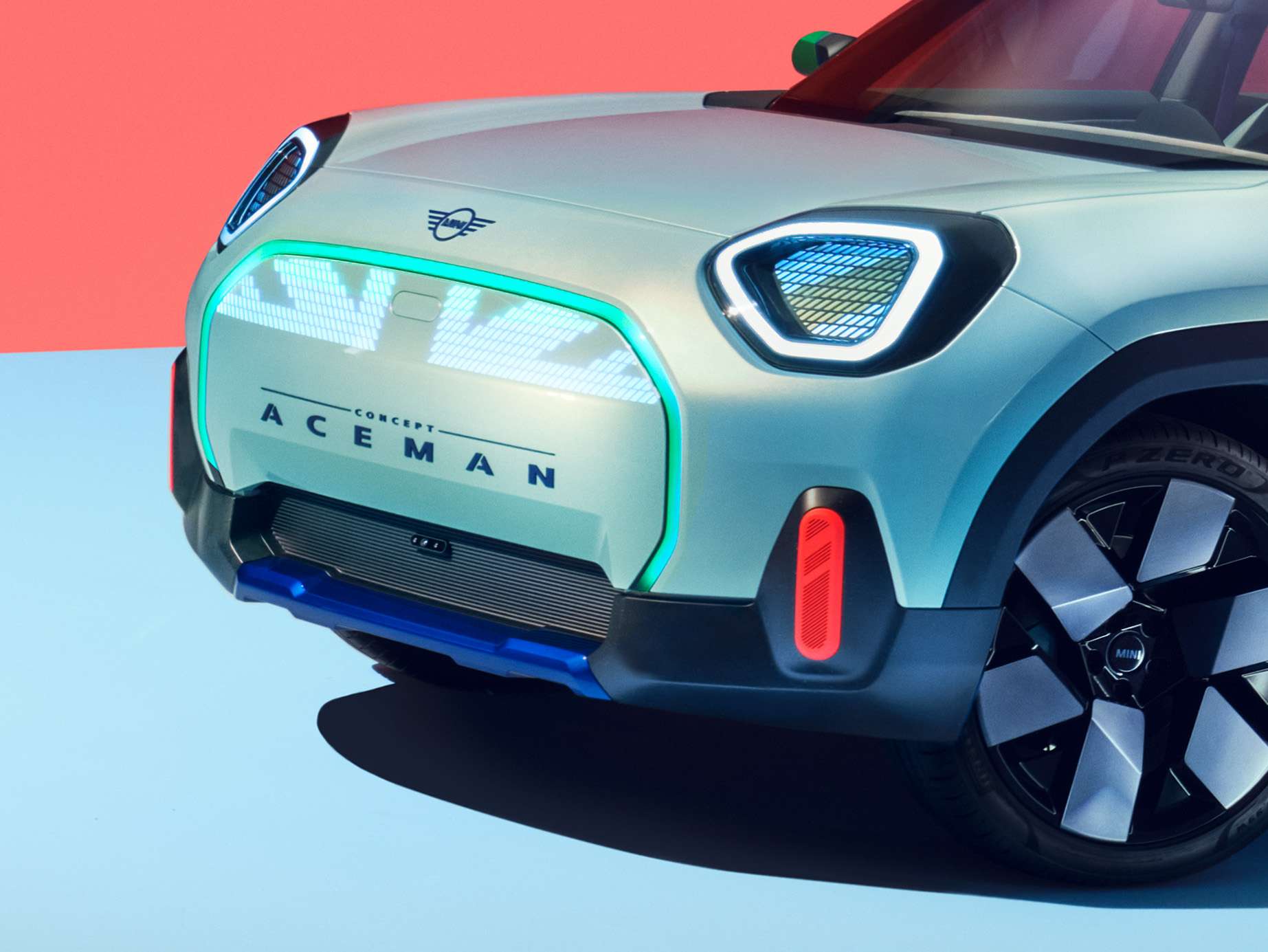
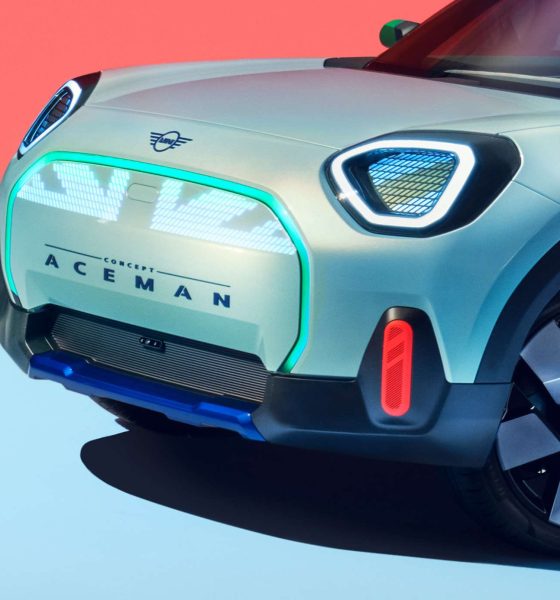
News
The MINI Aceman is both classic MINI and a new approach
MINI has released the first images and videos of their new Aceman concept EV and it marks a significant shift in design while retaining typical “mini-ness.” The vehicle may also be a departure from MINI’s first EV offering in terms of affordability.
As a note, I am a proud MINI owner. I drive a 2011 MINI Countryman S All4 and despite its flaws, I love what I can only describe as its “mini-ness,” and I’m not talking about the vehicle’s relatively small stature. “Mini-ness” is that intangible feeling that makes you think, “Why did they make this [insert part name] this way? And more concerningly, why do I like it?!” I am proud to say that from the initial images of the concept MINI Aceman, mini-ness is alive and well.
If released, the Aceman would be the brand’s second EV offering after the Cooper SE; however, though this hasn’t been confirmed, it would be likely that this would be the brand’s first purpose-built EV (perhaps built off the BMW iX platform) instead of an EV inside of the skeleton of an ICE mini. But this is only the start of the mystery surrounding the vehicle, as MINI was quite tight-lipped in what they shared about the vehicle, essentially only addressing the vehicle’s design and how it was “the beginning of a new MINI design era.”
While this vehicle is only a concept at this point, it does (according to mini) hint at future design. The MINI notably ditches leather and chrome and aims for a simple yet angular design. The exterior of the vehicle is quite exciting with a bright light blue body, a green hood, and red accents. The vehicle looks to be the size of the Countryman, if not a little bigger, but this may be the visual effect of the massive 20-inch wheels. The angularity of the exterior is exemplified in the hexagonal headlights/typical union jack taillights, as well as the hood that has (atypical for MINI) strong creases leading to the back of the vehicle. Nonetheless, the more general curviness of MINI design language remains in a couple of areas; the side and side profile.
- Front of Mini Aceman Concept. Credit: Mini
- Top view of Mini Aceman Concept. Credit: Mini
- Side profile of Mini Aceman Concept. Credit: Mini
- Rear quarter of Mini Aceman Concept. Credit: Mini
- Rear of Mini Aceman Concept. Credit: Mini
The sharp design language continues to the interior, and this is where pinnacle mini-ness is found. What the brand calls “MINImalism” involves removing nearly everything from the front dash; limited and basic climate controls, no visible window switches, no steering column-mounted tachometer, and nothing but the center screen. And while this may sound similar to Tesla’s interior design language, I would argue that the lack of window switches and the circular center screen help achieve the mini-ness feeling.
The fun coloring also continues within the cabin of the Aceman, but that wasn’t weird enough for MINI designers, they had to throw random geometric shapes on the seats and within the texture of the door panels/interior door handles. Once again; why did they design it this way? and why do I like it?!?!
- Front dash of Mini Aceman Concept. Credit: Mini
- Front seats of Mini Aceman Concept. Credit: Mini
- Rear seats of Mini Aceman Concept. Credit: Mini
While the strange MINI character is still very alive in the Aceman concept, many are worried that the thing that defined the Cooper SE may be gone from future MINI EVs; affordability. The Cooper SE was one of the cheapest EVs you could buy in the US, and despite its fairly disappointing specs, it grew its own community of people who were simply looking for a shorter-range fun EV. MINI will likely release more details about the vehicle when it is shown in person at the 2022 Gamescon in Cologne later this year, and be sure, the price will be on the tongue of every journalist who is hopeful for an EV future for MINI.
What do you think of the article? Do you have any comments, questions, or concerns? Shoot me an email at william@teslarati.com. You can also reach me on Twitter @WilliamWritin. If you have news tips, email us at tips@teslarati.com!

News
Tesla FSD fleet is nearing 7 billion total miles, including 2.5 billion city miles
As can be seen on Tesla’s official FSD webpage, vehicles equipped with the system have now navigated over 6.99 billion miles.

Tesla’s Full Self-Driving (Supervised) fleet is closing in on almost 7 billion total miles driven, as per data posted by the company on its official FSD webpage.
These figures hint at the massive scale of data fueling Tesla’s rapid FSD improvements, which have been quite notable as of late.
FSD mileage milestones
As can be seen on Tesla’s official FSD webpage, vehicles equipped with the system have now navigated over 6.99 billion miles. Tesla owner and avid FSD tester Whole Mars Catalog also shared a screenshot indicating that from the nearly 7 billion miles traveled by the FSD fleet, more than 2.5 billion miles were driven inside cities.
City miles are particularly valuable for complex urban scenarios like unprotected turns, pedestrian interactions, and traffic lights. This is also the difference-maker for FSD, as only complex solutions, such as Waymo’s self-driving taxis, operate similarly on inner-city streets. And even then, incidents such as the San Francisco blackouts have proven challenging for sensor-rich vehicles like Waymos.
Tesla’s data edge
Tesla has a number of advantages in the autonomous vehicle sector, one of which is the size of its fleet and the number of vehicles training FSD on real-world roads. Tesla’s nearly 7 billion FSD miles then allow the company to roll out updates that make its vehicles behave like they are being driven by experienced drivers, even if they are operating on their own.
So notable are Tesla’s improvements to FSD that NVIDIA Director of Robotics Jim Fan, after experiencing FSD v14, noted that the system is the first AI that passes what he described as a “Physical Turing Test.”
“Despite knowing exactly how robot learning works, I still find it magical watching the steering wheel turn by itself. First it feels surreal, next it becomes routine. Then, like the smartphone, taking it away actively hurts. This is how humanity gets rewired and glued to god-like technologies,” Fan wrote in a post on X.
News
Tesla starts showing how FSD will change lives in Europe
Local officials tested the system on narrow country roads and were impressed by FSD’s smooth, human-like driving, with some calling the service a game-changer for everyday life in areas that are far from urban centers.

Tesla has launched Europe’s first public shuttle service using Full Self-Driving (Supervised) in the rural Eifelkreis Bitburg-Prüm region of Germany, demonstrating how the technology can restore independence and mobility for people who struggle with limited transport options.
Local officials tested the system on narrow country roads and were impressed by FSD’s smooth, human-like driving, with some calling the service a game-changer for everyday life in areas that are far from urban centers.
Officials see real impact on rural residents
Arzfeld Mayor Johannes Kuhl and District Administrator Andreas Kruppert personally tested the Tesla shuttle service. This allowed them to see just how well FSD navigated winding lanes and rural roads confidently. Kruppert said, “Autonomous driving sounds like science fiction to many, but we simply see here that it works totally well in rural regions too.” Kuhl, for his part, also noted that FSD “feels like a very experienced driver.”
The pilot complements the area’s “Citizen Bus” program, which provides on-demand rides for elderly residents who can no longer drive themselves. Tesla Europe shared a video of a demonstration of the service, highlighting how FSD gives people their freedom back, even in places where public transport is not as prevalent.
What the Ministry for Economic Affairs and Transport says
Rhineland-Palatinate’s Minister Daniela Schmitt supported the project, praising the collaboration that made this “first of its kind in Europe” possible. As per the ministry, the rural rollout for the service shows FSD’s potential beyond major cities, and it delivers tangible benefits like grocery runs, doctor visits, and social connections for isolated residents.
“Reliable and flexible mobility is especially vital in rural areas. With the launch of a shuttle service using self-driving vehicles (FSD supervised) by Tesla in the Eifelkreis Bitburg-Prüm, an innovative pilot project is now getting underway that complements local community bus services. It is the first project of its kind in Europe.
“The result is a real gain for rural mobility: greater accessibility, more flexibility and tangible benefits for everyday life. A strong signal for innovation, cooperation and future-oriented mobility beyond urban centers,” the ministry wrote in a LinkedIn post.
News
Tesla China quietly posts Robotaxi-related job listing
Tesla China is currently seeking a Low Voltage Electrical Engineer to work on circuit board design for the company’s autonomous vehicles.

Tesla has posted a new job listing in Shanghai explicitly tied to its Robotaxi program, fueling speculation that the company is preparing to launch its dedicated autonomous ride-hailing service in China.
As noted in the listing, Tesla China is currently seeking a Low Voltage Electrical Engineer to work on circuit board design for the company’s autonomous vehicles.
Robotaxi-specific role
The listing, which was shared on social media platform X by industry watcher @tslaming, suggested that Tesla China is looking to fill the role urgently. The job listing itself specifically mentions that the person hired for the role will be working on the Low Voltage Hardware team, which would design the circuit boards that would serve as the nervous system of the Robotaxi.
Key tasks for the role, as indicated in the job listing, include collaboration with PCB layout, firmware, mechanical, program management, and validation teams, among other responsibilities. The role is based in Shanghai.
China Robotaxi launch
China represents a massive potential market for robotaxis, with its dense urban centers and supportive policies in select cities. Tesla has limited permission to roll out FSD in the country, though despite this, its vehicles have been hailed as among the best in the market when it comes to autonomous features. So far, at least, it appears that China supports Tesla’s FSD and Robotaxi rollout.
This was hinted at in November, when Tesla brought the Cybercab to the 8th China International Import Expo (CIIE) in Shanghai, marking the first time that the autonomous two-seater was brought to the Asia-Pacific region. The vehicle, despite not having a release date in China, received a significant amount of interest among the event’s attendees.
